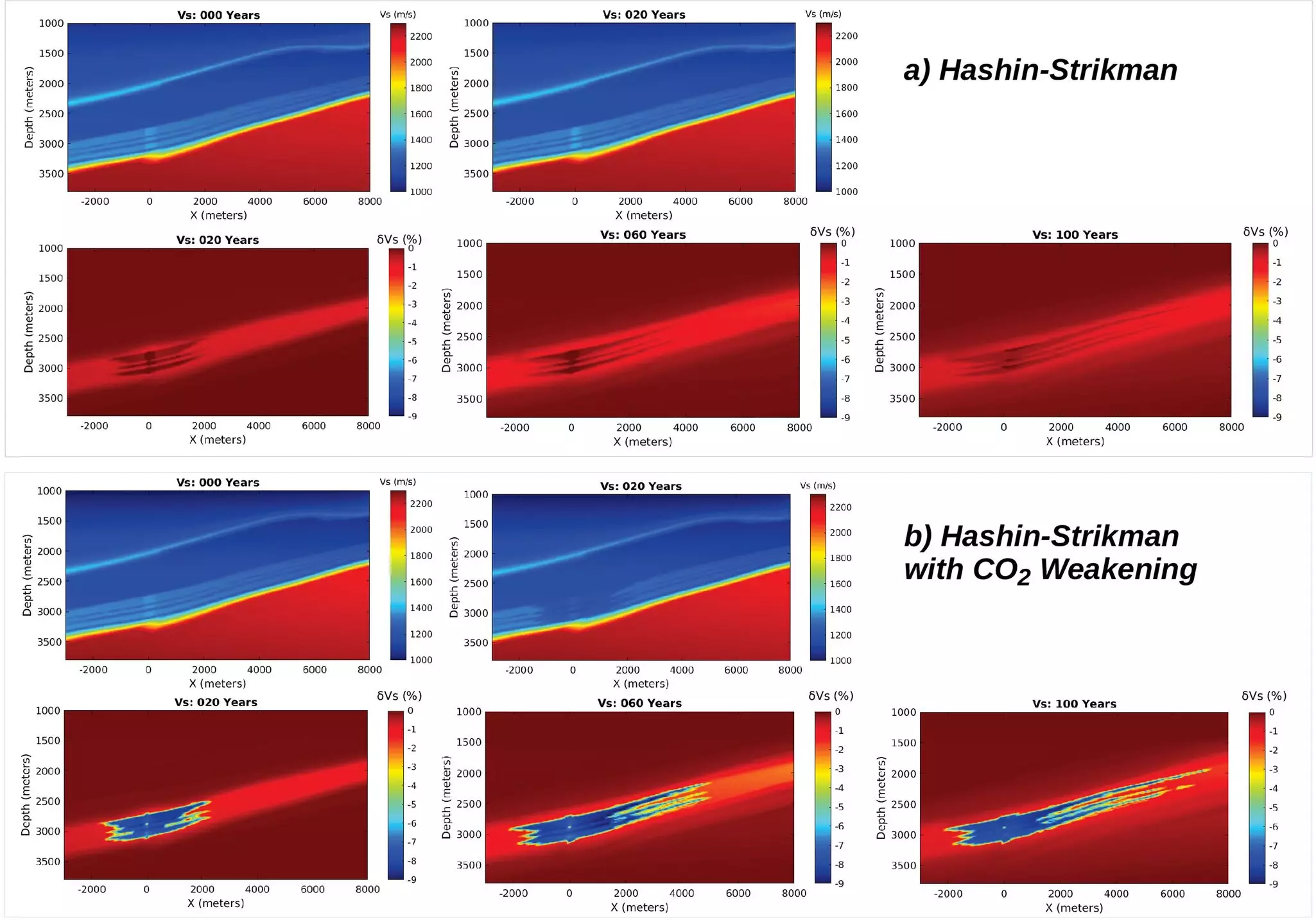As our planet grapples with the urgent challenge of climate change, innovative strategies to capture and store carbon dioxide (CO2) are more critical than ever. The quest for effective solutions has brought attention to geologic carbon storage as a pivotal method for sequestering greenhouse gases. However, the current monitoring techniques, particularly seismic methods used to assess how effectively CO2 can be stored underground, are often inadequate. With the publication of new research from Los Alamos National Laboratory, there is hope for a paradigm shift in this realm—a new rock physics model that offers an enlightening approach to understanding how CO2 interacts with geological formations.
The existing seismic monitoring frameworks, predominantly based on the Biot-Gassmann equation, have their limitations. While they serve as the standard for assessing the elasticity of rock when saturated with CO2, they fail to encompass the intricate dynamics of CO2-rock interactions. These interactions are fundamental, as they influence the integrity and stability of carbon storage sites. With the looming threat of leaks potentially posing environmental and human risks, the urgency to enhance these monitoring techniques cannot be overstated.
A Deep Dive into the New Rock Physics Model
The new rock physics model introduced by the Los Alamos team represents a significant advancement over conventional methods. What sets this model apart is its focus on understanding both the compressional and shear-wave velocity changes that occur when CO2 is introduced into a rock matrix. Lianjie Huang, a senior research scientist, emphasizes this innovation, asserting that the model allows for a more nuanced representation of the mechanics at play within the geologic storage environment.
Prior approaches, such as the Biot-Gassmann equation, primarily navigate the realm of linear relationships and fail to account for the non-linear stress behaviors and chemical interactions that can weaken the rock framework over time. Through careful laboratory experiments, researchers have found that CO2 can induce greater changes in elastic properties—particularly in shear-wave velocities—than what the traditional models predict. These insights are not merely academic; they hold substantial real-world implications for the monitoring and management of CO2 storage sites.
The Implications for Carbon Storage Reliability
The reliability of geologic carbon storage hinges on our ability to accurately model and predict how CO2 behaves within storage reservoirs. By developing an enhanced understanding through the new rock physics model, the Los Alamos research acts as a catalyst for building more reliable seismic monitoring techniques. This, in turn, can help scientists pinpoint vulnerabilities within storage sites, providing a clearer picture of when and where leaks might occur.
The potential repercussions of failing to address these vulnerabilities could be disastrous, both environmentally and socially. The risk of leaks introducing sequestered CO2 back into the atmosphere undermines the entire premise of carbon capture, as it could exacerbate rather than mitigate greenhouse gas concentrations. Thus, the new rock physics model not only represents a scientific advancement; it embodies an essential tool in the urgent fight against climate change.
This groundbreaking research emphasizes the need for a shift in the current methodologies used for monitoring geologic carbon storage. By adopting the insights provided by the new rock physics model, scientists can significantly improve their capacity to capture, quantify, and store CO2 effectively. From enhancing the accuracy of seismic monitoring to bolstering the safety of carbon storage systems, this research reimagines the landscape of carbon capture technology.
While the journey toward effective carbon capture and storage is fraught with challenges, the innovative work emerging from Los Alamos National Laboratory offers promise and pathways for a more sustainable future. Through rigorous scientific inquiry and technological advancement, we can harness nature’s potential for carbon sequestration and contribute more effectively to the fight against climate change. The implications of this research extend far beyond the laboratory, providing a beacon of hope in our collective efforts to safeguard our planet against the tides of climate catastrophe.


Leave a Reply